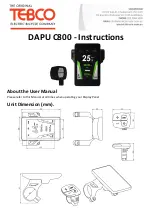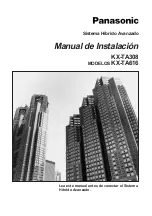
12
Defender
™ Series Bases Service Manual
CHAPTER 2 TROUBLESHOOTING
2.1
Troubleshooting
This section of the manual provides guidelines for evaluating the condition and performance of a Base unit,
and a standard troubleshooting methodology to follow.
2.1.1 Checking Load Cells for Trouble
Visual Check:
Examine the Load Cell for signs of bending, twisting or corrosion.
–
Clean the unit before evaluating any mechanical problems. In some cases, debris may have
accumulated inside the Base Housing. Make sure there is no buildup of any foreign material.
–
Examine the Base Housing for dents, bent Platform or signs of physical abuse that could
cause the Base to malfunction. Make sure that the proper Platform is supplied with the Base.
Replace all damaged parts. See Chapter 5 for parts list.
–
Remove the Platform from the Base. Check that the Overload Stops are not touching the Top
Plate. This would restrict movement, causing improper operation of the Base. If the Overload
Stops are improperly set, adjust them. (See Section 3.3.)
–
Check the metal surfaces of the Platform. All surfaces should be parallel.
If the platform is deformed, it should be replaced.
–
Check the cables leading to the Load Cell for cuts, abrasions or other signs of excessive wear
and tear.
–
Check for a bent or twisted Load Cell:
Place the top surface and then each of the sides of the
Load Cell on a flat surface, to see if it rests flat and even. A gap indicates a bent or twisted
Load Cell.
–
Examine the Load Cell for corrosion due to high humidity or exposure to chemicals.
–
A Load Cell that is even slightly bent or corroded should be replaced.
Perform a Resistance Test
, to determine if the Load Cell is severely damaged or a short
circuit to the frame has occurred. (See Chapter 4 for details.)
Perform an Output Voltage Test
:
Measure the no load, 50% load and full load output.
The reading should meet the Load Cell specifications. (See Chapter 4.)
–
The Load Cell output should be very close to linear over its capacity range.














































